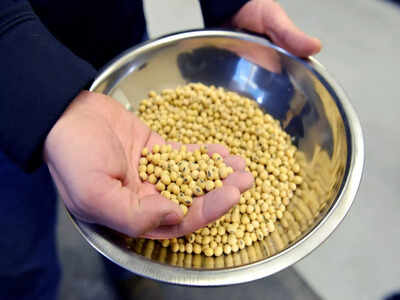US-China tensions: Beijing brimming with soybean after Trump-Xi meeting – Why it is still not a green flag for Washington

China’s ports are brimming with soybeans after months of record imports, dimming hopes for US exporters even as Trump and Xi reached a new trade understanding including fresh purchase commitments from Beijing.Massive reserves, weak processing margins and cheaper South American supplies have combined to stall demand for US beans. “State firms may be waiting for margins to recover before making large-scale purchases,” said Johnny Xiang, founder of Beijing-based AgRadar Consulting. “Even with tariff waivers, margins remain negative and Brazilian beans are still cheaper.”
Deal promises versus market reality
Following a meeting between Donald Trump and Xi Jinping last month, US officials announced that China had agreed to buy 12 million tonnes of soybeans before the year ends and 25 million tonnes annually for the next three years. But Beijing has yet to publicly confirm those figures. While retaliatory tariffs on US imports were suspended, state trader COFCO has so far booked only a handful of cargoes for December and January, according to market participants.
Soy stocks hit record highs
China’s early-year rush to secure soybeans from South America, prompted by fears that the trade conflict could persist, has left the country sitting on unusually large inventories. Data from Sublime China Information show port stocks at a record 10.3 million tonnes as of November 7, up 3.6 million tonnes year-on-year. Crushers, firms that turn beans into oil and meal, held 7.5 million tonnes, their highest since 2017.The oversupply has weighed heavily on prices. Soymeal, used to feed China’s vast pig population, has fallen by more than 20% since April, now hovering around 3,000 yuan ($421) a tonne in major coastal regions including Tianjin, Shandong, Jiangsu and Guangdong, according to Mysteel data.Profit margins for crushers have been negative since mid-year, with losses this week around 190 yuan per tonne in the processing hub of Rizhao. Analysts see little improvement before March. “There is not much room for China to increase soybean imports,” said a trader with a global oilseed processor. “Soybean stocks are huge and demand for the feed sector is very slow.”
No rush to buy
Expectations that China’s state-owned importers, COFCO and Sinograin, would quickly ramp up purchases after trade talks have so far proved unfounded. Even so, Washington appears to be holding Beijing to its reported promises.“The administration expects our trading partners to adhere to their deal commitments,” a US official told Reuters. “The president reserves the right to adjust tariff rates, export controls, and other concessions to hold our trading partners accountable to their deal commitments.”Traders estimate that state stockpiles stand at between 40 million and 45 million tonnes, roughly double last year’s US imports and enough to satisfy five months of early-year consumption.Meanwhile, private importers are favouring Brazil, where January cargoes are quoted at about $480 a tonne including freight, compared with $540–$550 for U.S. shipments. December bookings from Brazil total roughly 2 million tonnes, covering more than 40% of China’s expected monthly demand, with January purchases still slow.As Arlan Suderman, chief commodities economist at StoneX, noted in a Tuesday briefing, “There’s very little indication that state buyers are engaged in a programme to purchase 12 million metric tons ahead of the end of this year, let alone 25 million tons more for calendar year 2026.”





